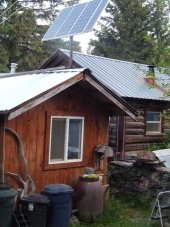
 2
2








"People get out your way, when you're on fire". Richard Prior

 1
1




For all your Montana Masonry Heater parts (also known as) Rocket Mass heater parts.
Visit me at
dragontechrmh.com Once you go brick you will never go back!
 2
2




 2
2




 1
1




 2
2




Iterations are fine, we don't have to be perfect
My 2nd Location:Florida HardinessZone:10 AHS:10 GDD:8500 Rainfall:2in/mth winter, 8in/mth summer, Soil:Sand pH8 Flat
 1
1




S Bengi wrote:Greg what a wonderful find. I esp like how it doesn't harm fish + self-cleaning.





Greg Mamishian wrote:
S Bengi wrote:Greg what a wonderful find. I esp like how it doesn't harm fish + self-cleaning.
I love to see elegantly simple ideas like that. If someone was going to build one to experiment, they could pour a flat slab with a hole for the impeller and then arrange loose cinderblocks and move them around in order to find out the optimum profile to make the hole swirl the most freely with the least amount of water. Although I'll never use this design as we have no flowing water, I have been interested in flow design for years and built and dyno tested this aluminum intake manifold for my car.

"People get out your way, when you're on fire". Richard Prior
 1
1




Brian Rodgers wrote:Oh man that's sweet looking Greg. How did it test out?
Brian


|
I am not young enough to know everything. - Oscar Wilde This tiny ad thinks it knows more than Oscar:
Freaky Cheap Heat - 2 hour movie - HD streaming
https://permies.com/wiki/238453/Freaky-Cheap-Heat-hour-movie
|






